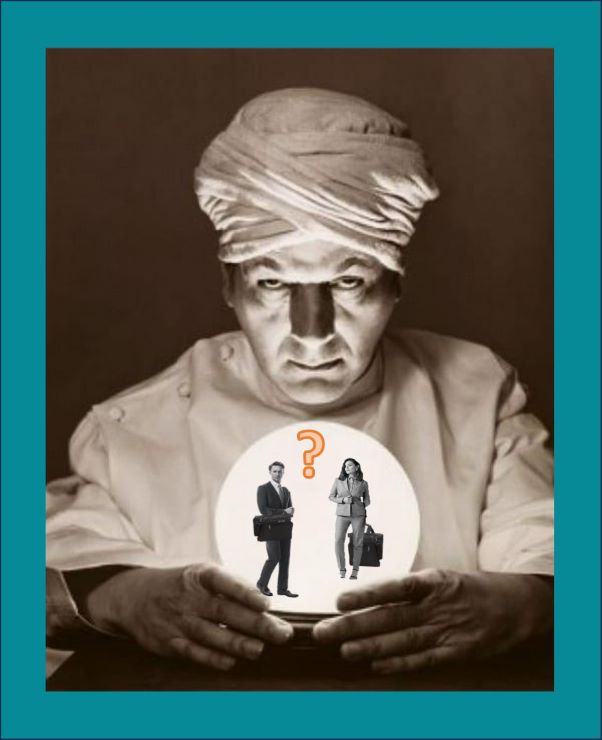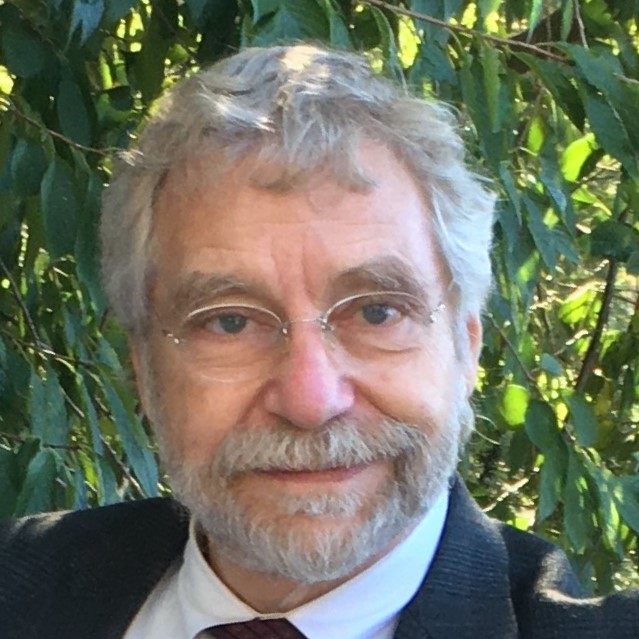-“The deck is the product.”
“No, No. the deck isn’t the product. The change, the result is the product. The deck is just a tool to help us get there.”
This was a real conversation that encapsulates the difference between content consultants, who proide answers, and process consultants, who ask questions to drive change.
Consultants and consulting firms, whether content or process spend far too much time focused presenting. There are hours of angst about, “the deck,” “the slidepack” “the panelset.”
This has always been true, even before PowerPoint, the now ubiquitous Microsoft presentation software. In prehistoric times, when I started in consulting, slides or charts were made by hand using Letraset press-on letters on acetates or “flimsies.”
I know people who worked for firms like Alexander Proudfoot and its’s descendent United Research who hired calligraphers and artists to hand draw “panels, ” 30” x 40” hard white posterboards bound into a leather bound book that was flipped through with the client executive team.
The presentation delivery technology has changed. Now typos are easily correctable and changes can be made up until the very last minute, no, make that the very last second. Some consultants insert video or online connections or TikTok or. . . whatever, because, well. . . because “they can.”
But the process is the same – a presentation must be :
Planned —- Validated — Practiced —— Presented
In my view too much of the focus is on the last step. Consultants want to sound smart and confident. They want to “Wow” the client. This is unfortunately true for both content and process consultants. Presentations are the “Big Reveal,” the surprise finish to the project.. Consultants dream of a “standing ovation.” In my experience vigorous applause is a rarity and worrying, because the focus may be on the consultant’s “big idea,” and not on achieving results for the client.
Storyboarding: Planning starting with the end.
In an early project as a young consultant, I had learned so much about the industry and the product we were studying I wanted to showcase that knowledge. My project lead, a man who had worked in advertising and entertainment stopped me cold.
“What do you recommend that the client do?”
“Well, because of. . .”
“No, one simple declarative sentence.”
“Well, the channel says that. . “
“What part of ‘simple declarative sentence,’ didn’t you understand?”
I’ll spare you the further repetition of this conversation untill I finally got it.
“Build one product; ignore the other.”
Then my project lead asked me, “Which one finding leads you to that conclusion?
Then, “What other supporting findings?”
He walked me backwards to the beginning, “What did the client ask us to do?”
Each time he asked he wrote the simple declarative sentence on the top of a blank page.
“That’s your story” he said. “Now fill in the data that fits that story, whether it is from interviews, analysis of market data, competitor information. If it doesn’t fit the story or has too much detail it goes in the Appendix.”
The story is what is important. I know some consultants want to tell a “three act story” or the “hero’s journey,” but I favor simplicity
- You asked us to look at this
- Here is what we found
- Here are the implications
- Recommendations and Next steps
Some consultants build highly complex slides that show the depth of their analysis. They feel this justifies their fees. If the client is confused they look smart. I put those slides in the appendix.
Pre-presents, validation and commitment building
As consultants, we look at data, that might or might not have been easily available to parts of the client system. We talk to customers and suppliers, and staff who might not have been talked to in a while. We might bring some industry or management knowledge from other client projects.
All of these data may lead us to our conclusions. What we want is for the client to take action. If we are content consultants, we want clients to act on our recommendations. If we are process consultants, we may work alongside our clients, but we want them committed to action rather than just waiting for us to leave so they can go back to doing what they’ve always done.
The “Big Reveal” presentation, where we surprise the client and/or embarrass members of her leadership team runs counter to that.
Never present data that haven’t been validated or at least shared with those in the organization accountable for acting upon it.
At Gemini Consulting, we used to call those “pre-presents,” which is a silly term that means you present before you present. Where I have worked with extensive client teams, I have built the final presentation with the key members who will act upon it. Sometimes they presented the data, not me.
Isn’t there a danger that members of the client system will rush off to fix problems you uncovered? Yes. If it is a simple fix, that isn’t a problem, just get agreement that you can document the change, giving credit to the one who makes it. If it part of a systemic change you must gain agreement to wait until all the parts of the system are visible. That may require a longer conversation, validating the finding, discussion implications and possible negative effects of acting prematurely.
Practice, Practice, Practice
In his book Outliers, Malcolm Gladwell highlighted and amplified he research of K. Anders Eriksson, that anyone who is world class, has logged at least 10,000 hours of practice. One might think that consultants who quote this research wouldn’t resist practice or say,
“Practice? Nah. I got this. I like to keep it fresh.”
As consultants we pride ourselves as being “good on our feet,” confident sounding presenters. I have found that practice helps and the “freshness” of a first run-through is quickly derailed by an inconvenient client question.
The Big Day – Presenting with competence and confidence.
There are multiday courses on presentation skills. I have learned a great deal from them including where to stand, when to use a microphone, and what kind, how to dress, move, gesture, and use the full range of my voice. I’m not going to try to replicate those courses in a few paragraphs.
I will impart a few principles:
- Know your audience. If you have done your work on the project and the appropriate validation steps you have a good start. I have seen partners who don’t have this advantage arrive just early enough to meet and greet a few of the executives. This also means watch your examples. I had a colleague who told me that some movies I referenced were made before she was born. We laughed when later she mentioned some musical artists that left clients my age scratching their heads.
- Think Engagement – not data dump. Remember that your goal is action, not absorbing every miniscule esoteric piece of analysis you have done. This will lead you to dress and act like the client, maybe a little better. This will lead you to stop periodically and ask questions of the group. It will lead you to move to different positions to be closer to different people. It will encourage eye contact and not turning your back reading off the screen.
- Capture reactions and questions. I am a fan of the parking lot, a flipchart or whiteboard on which I can capture questions or reactions in real time. That way I can keep the flow and come back to them later. On mult-consultant teams, whomever wasn’t speaking manned the parking lot.
- Be cautious about technology. Both Bill Gates and Steve Jobs had the same rule: “No Live Demos!” I’m a bit of a technophobe, so I assume Murphy’s Law will apply, (Whatever can go wrong, will go wrong). So I check batteries in laser pointers and slide changers, make sure I have an extra bulb for the projector and am exceedingly leery of on-screen Internet links and videos. There are effects I never used as a consultant and those I did I checked and rechecked.
- Follow up The presentation is not the end; it’s the beginning. You want action, change, so even if you are a content consultant and everyone applauded your recommendations, things go awry. Get back with the client, answer questions, offer suggestions on roadblocks. I’ve also seen what was widely viewed as a disastrous presentation saved by follow-up.
Plan—- Validate — Practice —— Present —– Follow-up
Confidence born of competence. Content before style. Be authentic, helpful where you are asked to be, and focus on action and results.
And remember, present only as much as you need to. Nothing is happening when you are talking.






Totally agree with all the points you mentioned, Alan. I’ve found that all too often, people frequently don’t pay attention to two things.
The first is to rehearse, the second is to follow up. All the work that went into a presentation designed to address the relevant points and to demonstrate an understanding of client issues, and provide solutions, is wasted if the delivery of that information has not been rehearsed. If anticipated questions and potential objections are not well thought out with appropriate answers. It takes a fair amount of rehearsal to make a presentation seem “unrehearsed”.
And without follow-up, any unasked or unanswered questions are never addressed. Follow-up provides the opportunity to address those issues and gain agreement.
Once again we find ourselves in agreement, Bob
Funny how that keeps happening.
I appreciate your continued support.
It’s a real eye-opener when you find out that Soft Skills are definitely Skills…
Where I am habitually sneering at ‘office’ personnel, whether they are managers, directors of the board, or from accounting, just because I know how to weld and they do not… I would not be able to talk with multiple people in an organisation in order to find out how to improve a process or business. So while your short ‘code of conduct’ for the young consultant in a hurry will not make me change career or even character, it does shine a light on the intricacies of dealing with people and how neccesary it is to know how to do it with respect and dignity. Which goes for everyone, even for welders.
Thanks for your comment, Arend
To be clear, I don’t weld.
I used to introduce myself at line leadership training saying “I have spent my career talking to people like you. That means I have gotten quite good at ‘talking about work,’ but don’t for a minute think that I can actually do real work, I’m just good at talking. I do have an abiding respect for those who do real work.”
even
Business is all about the people; customers, suppliers, the workforce, shareholders, even consultants and welders have one thing in common, we’re all people and we do respond well to respect and dignity and not-so-well to the absence.
I appreciate your support and rspect your skills.